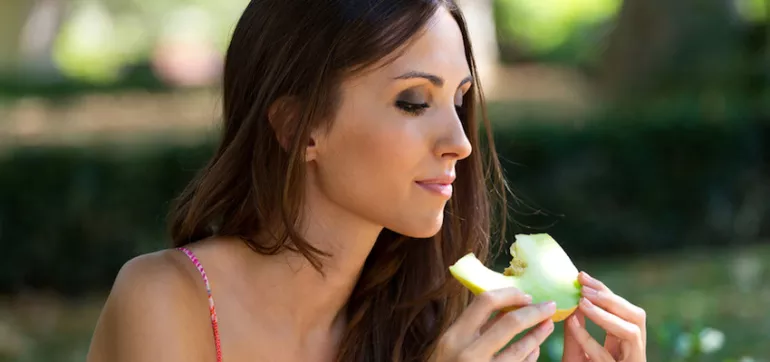
As a student of health promotion, I know there are redundant systems in our bodies that promote artery function (think optimal heart, brain, and sexual performance) which make me just shake my head in appreciation and wonder. One of my favorite examples of this phenomenon is the generation of nitric oxide (NO), a small gas molecule whose discovery led to the Nobel Prize in Medicine in 1989.
When manufactured in adequate amounts, NO causes arteries to enjoy increased blood flow, less clotting (i.e. fewer heart attacks and strokes), and less atherosclerosis. These three results are ones you surely want to maximize in your search for wellness and vitality.
The main source of NO is in the lining of arteries, called the endothelium. NO can act right at the battlefront, where blood cells, fats, toxins and arteries interact every second of every day. There are ways to enhance NO production by eating certain foods that lead to the generation of NO.
A recently discovered miracle is that the body has two backup systems for NO production, reminiscent of an airplane with multiple safety modes. One system for NO production exists in our skin and explains why enjoying safe amounts of sunshine may lower blood pressure and enhance health.
The other system is in our mouths and is worthy of words of praise. In a nutshell — and nuts can be a good way to boost NO production — our mouths have the following system:
- The grooves in our tongue contain bacteria called facultative anaerobes.
- Plant foods capture nitrogen from the soil and store them as nitrates.
- Chewing leads to a mixture of the bacteria in our saliva and the nitrates in our plant-based foods, resulting in a conversion to nitrites.
- Nitrates can be absorbed, circulate, and enter endothelial cells in arteries, enhancing NO production.
The miracle of mastication (Scrabble word for chewing, in medical jargon) is not limited to NO production. Raw cruciferous vegetables contain a chemical, glucophoranin, and an enzyme called myrosinase. These foods include broccoli, kale, bok choy, greens, and cauliflower.
Until these veggies are chewed, the chemicals are separated (imagine a glow stick), and no reaction occurs. When we break apart the cells by chomping long and hard, we allow the glucophoranin and the myrosinase to mix, which produces sulforaphane, a powerhouse chemical that’s been shown to prevent cancer, heart disease, brain disease and obesity.
Unfortunately, if you prefer cooked cruciferous vegetables most of the myrosinase is destroyed by cooking. However, chopping them well and letting them sit half an hour or so before cooking mimics chewing and the reaction will still occur, creating sulforaphane (adding in some raw vegetables to the cooked or sprinkling on dried mustard powder does the same thing).
Are there health implications understanding chewing for health? One study examined the effects of using an antiseptic mouthwash known to destroy the mouths’ bacteria. After one week of use, nitrite levels in the blood fell and blood pressure rose 2-3 mmHg, which is never a good thing in the long term.
What are the take-home messages from knowing that “Just Chew It” is a logo you should wear proudly on your apron? These include:
1. Chew your food slowly and thoroughly, perhaps 20 or more times, consciously appreciating that you are improving your health and activating the glow stick.
2. Avoid antiseptic mouthwashes unless prescribed short term for an infection.
3. Try juicing to capture huge amounts of plant-based nutrition! Just remember to chew your juice, and eat whole foods, too.
4. When making a smoothie with green vegetables such as kale or spinach, consider making what I call a chunkie, a drink with fairly large pieces of ground leaves requiring chewing before swallowing. Practice using your blender or bullet for less time to produce larger chunks.
Originally posted on MindBodyGreen.com

